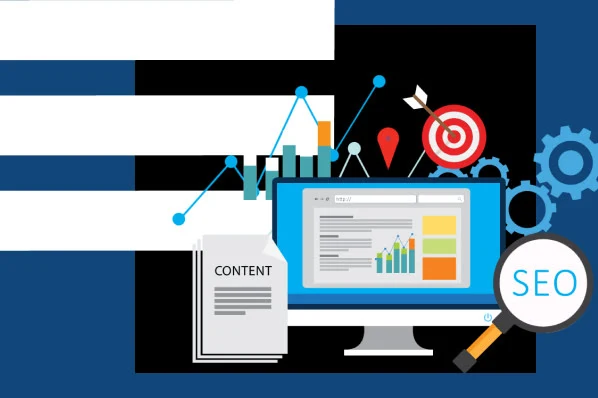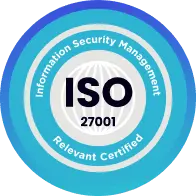Our team has prepared for you 7 important tips that will help you improve SEO optimisation.

- To ensure success in search engine rankings, it is crucial to dedicate as much time to analyzing search engine results pages (SERPs) as you do to using SEO tools. While algorithms determine SERP rankings, they reward web publishers who create high-quality content. Understanding search intent is key, and one way to achieve this is by analyzing the SERP for a specific keyword to identify the problems users are trying to solve.
We emphasize the importance of combining insights from SEO tools with real-time observations of the SERPs. When targeting new keywords, updating content, or diagnosing irregular traffic, it is recommended to examine the top results for relevant queries on Google. Paying attention to various factors based on your goals, including search features, the type of content ranking (such as product pages, listicles, tutorials), the websites ranking (databases, businesses, media sites, directories), the position of the first organic result on the page, and how your page appears in terms of title, meta description, date, jump links, and applicable schema. When conducting these searches, we advise using an incognito window, regularly clearing cache, cookies, and history, and performing searches on both desktop and mobile devices to gather comprehensive insights. By incorporating these practices, you can gain a deeper understanding of search intent and optimize your content accordingly.
- When it comes to on-page SEO, it’s important to remember that not every piece of content you publish has to be fully search-friendly. On-page SEO focuses on optimizing various aspects of a webpage to improve its visibility and ranking in search engines. These aspects include high-quality page content, page titles, headers, meta descriptions, image alt-text, structured markup, page URLs, internal linking, and site speed.
For the purpose of this example, let’s narrow our focus to the copy-oriented elements of on-page SEO, such as high-quality content, page titles, headers, meta descriptions, and image alt-text. These components are crucial for optimizing your page copy and improving your search engine results page (SERP) rankings.
When creating optimized page copy, it’s important to prioritize a few key factors. First, include your target keyword in a natural and contextual manner throughout your content. This helps search engines understand the relevance of your content to user queries. Additionally, ensure that your content provides valuable information and answers potential questions that your users may have. By doing so, you are indicating to search engines that your content is informative and comprehensive.
However, not every page on your website needs to be heavily optimized for search. Some pages, such as ad landing pages, thank-you pages, internal sales enablement pages, or login pages, may not require as much attention in terms of SEO. It’s important to prioritize optimizing for search when the potential payoff is greater than the time invested. For pages where the benefits of SEO may be minimal, it’s okay to temporarily place them on the “back burner” and tackle their optimization once you have the resources to do so efficiently.
Building a process to streamline the optimization of these lower-priority pages can help reduce the time investment needed later on. By implementing a systematic approach and leveraging resources effectively, you can optimize your website’s on-page SEO while efficiently managing your time. Remember, on-page SEO is a continuous process, and by finding a balance between optimization efforts and practicality, you can achieve long-term success in improving your website’s visibility and organic traffic.
- When it comes to organic search strategy, it is crucial to target a mix of high and low-volume keywords. According to a recent survey on Web Traffic & Analytics, 48% of SEOs focus on highly competitive keywords, while 47% target keywords with average competition levels.
To effectively reach your target audience throughout their buyer’s journey, it is important to include a variety of high and low-volume keywords. Braden Becker, SEO Lead at Faire, explains that broad, early-interest keywords tend to have higher search volumes, while later-interest or purchase-ready keywords have lower volumes due to their specificity. Therefore, it is beneficial to target low-volume keywords if they have a higher likelihood of converting traffic into leads or customers.
- To create an effective organic search strategy, it is important to target a combination of high and low-volume keywords. Recent research on Web Traffic & Analytics reveals that 48% of SEOs focus on highly competitive keywords, while 47% target keywords with average competition levels. This approach allows you to effectively reach your target audience throughout their buyer’s journey.
According to Braden Becker, SEO Lead at Faire, broad, early-interest keywords typically have higher search volumes, while later-interest or purchase-ready keywords have lower volumes due to their specificity. Therefore, it can be beneficial to target low-volume keywords if they have a higher likelihood of converting traffic into leads or customers.
Additionally, it is recommended to be creative when targeting high-volume keywords. The HubSpot SEO team conducts comprehensive keyword research, taking into account factors such as search volume, which can range from as high as 120,000+ to as low as 50.
By targeting a diverse set of high and low-volume keywords, you can optimize your organic search strategy and effectively reach your target audience at different stages of their buyer’s journey. This approach increases the chances of attracting and converting relevant traffic into leads or customers.
- Developing a link-building strategy is essential for improving your domain authority by acquiring high-quality inbound links from reputable websites and pages. However, it is important to note that simply creating content does not guarantee that others will naturally link to it. To earn high-quality links, we primarily focus on networking with websites that have a higher domain or page authority. We proactively reach out to these sites and request links to our relevant content. By ensuring that our content aligns with the referring website’s content, we increase the likelihood of obtaining valuable links. This approach allows us to build a strong network of quality backlinks and enhance our overall SEO efforts.
- It is generally recommended to avoid changing URLs whenever possible. Tim Berners-Lee, the inventor of the internet, famously stated that “Cool URIs don’t change.” This means that a cool URI is one that remains consistent over time. While people may change URIs, the ideal is to keep them stable.
To clarify, a URI (Uniform Resource Identifier) is used to identify a resource, while a URL (Uniform Resource Locator) provides information on how to locate that resource. For instance, a URI can be compared to a person’s name, while a URL is akin to their home address. The name simply identifies the person, while the address indicates where they can be found.
Pan emphasizes that URLs, which are a subset of URIs, should undergo minimal changes. The history of why a URL changes often involves good intentions that may become lost over time. Therefore, it is advisable to make a note when you notice any traffic anomalies, just as you would when documenting other important information.
By striving to maintain stable and consistent URLs, you can ensure a smoother user experience and avoid potential issues associated with broken links or outdated references.
- It is generally recommended to avoid changing URLs whenever possible. This is based on the principle that “Cool URIs don’t change,” as famously stated by Tim Berners-Lee, the inventor of the internet. The idea behind this statement is that a cool URI is one that remains consistent over time. While it is true that people may change URIs, the ideal practice is to keep them stable.

To clarify, a URI (Uniform Resource Identifier) is used to identify a resource, while a URL (Uniform Resource Locator) provides information on how to locate that resource. In simpler terms, a URI can be compared to a person’s name, while a URL is akin to their home address. The name simply identifies the person, while the address indicates where they can be found.
Pan emphasizes that URLs, which are a subset of URIs, should undergo minimal changes. The history of why a URL changes often involves good intentions that may become lost over time. Therefore, it is advisable to make a note when you notice any traffic anomalies, just as you would when documenting other important information.
By striving to maintain stable and consistent URLs, you can ensure a smoother user experience and avoid potential issues associated with broken links or outdated references. Keeping URLs unchanged helps maintain the integrity and reliability of your website’s content.
Author
-

Alisha is the Editor-in-Chief of Search Engine Journal. Before that, she covered tech for News & Trends, content editing, and social strategy at AdClickAgency. Alisha holds a BA in English and Journalism from Mount Holyoke College and an MBA in Marketing from San Francisco State University. Her work has also appeared in Thrillist, the Boston Herald, and EcoSalon, and she's based in St. Petersburg, Florida.
View all posts







